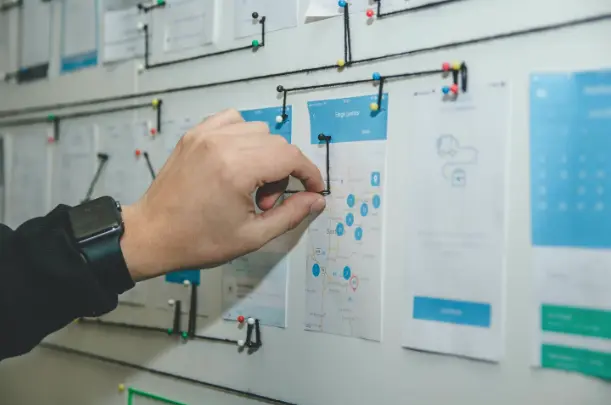Top 10 Web Design Trends to Watch for in 2023
Web Design trends are continuously evolving, adapting to new technologies, user behaviours and cultural shits. In 2023 there are several exciting web design..
Being a technology company following a design process is extremely important to the success of your product or service. If you have the budget, hiring designers who have the right mindset to follow a process to arrive at a result would be a good idea. And when it comes to independent design studios like us, “follow the process” is a mantra we chant everyday.
Without a solid process in place, your business has a lower chance of succeeding. Technology or software is the business of people, and that’s where the power of design thinking is advantageous.

Understanding consumer mentality is one of the most difficult tasks imaginable due to the unpredictability of consumer behaviour. Your approach has to be flexible enough to adapt to changes and robust enough to handle scaling. This is only possible if you fail fast and iterate.
Design thinking is one such tool that is non-linear, iteratively used to challenge assumptions, eliminate the wrong solutions and arrive at the right solutions to the right problems. The beauty of it lies specifically in the iterative nature, wherein you don’t stop designing even after the product is launched.
Source: https://public-images.interaction-design.org/literature/articles/materials/
It involves 5 stages – Empathize, Define, Ideate, Prototype and Test.
At Magnetize, our focus is on helping companies build digital products and experiences successfully following best practices. We have built and launched our own products to serve a wide variety of audiences while coming up with solutions to complex problems.
A factor that sets us apart from other design groups is our process. We make use of data that is backed by behavioural science helping you decrease the entropy of consumer psychology.
Source: https://visme.co/blog/wp-content/uploads/2022/02/Marketing-Psychology-15-Tactics-to-Influence-Consumer-Behavior
Although we use the design thinking process at the core of our design approach, the way in which we tackle a problem depends on the product or service you’re designing. In the entire product development lifecycle, you might find that some techniques work for you and some don’t and that’s what we do – we employ the best methodologies by combining structure, content, data, design language and research in a way that enables you to accomplish your goals.
At times, the design thinking process may be interchanged with the bottom-up approach of five elements of user experience: Strategy, Scope, Structure, Skeleton and Surface. Where the five steps of design thinking is how you do it, the five elements of user experience is what your design output looks like. The goal is still the same – designing delightful experiences for users.
Discovery: The first thing we do when you come to us with a problem, is to learn about the user needs, learning about your business objectives and auditing your existing product if available.
Understanding business goals: We gather knowledge from our clients and understand the company’s vision and project goals
Understanding user requirements: We then understand who the relevant users are, and gain clarity on their needs and motivations
Market research: Analysis of current market scenario and competitors in order to set a direction and roadmap for the project
Our expert UX consultants conduct a 1-2 week discovery workshop to gather knowledge from all stakeholders which helps us cater to varied requirements.
Brand and identity design: Our brand consultants craft a holistic brand identity for you that reflects your vision and connects with your target audience at an emotional level
If all this seems overwhelming, we would love to talk to you over a cup of coffee and help you communicate the needs of your business properly. Design thinking truly supports growth at every step. The very iterative and human-centred focus of the approach facilitates constant knowledge accumulation throughout the product life cycle.
It has been key to several huge organisations and we believe it will prove valuable to your business too. Contact us today for a free consultation. We’d love to build something amazing with you!
Sign up for our monthly newsletter.
We will understand your business and brainstorm some ideas to tackle your problem.
Web Design trends are continuously evolving, adapting to new technologies, user behaviours and cultural shits. In 2023 there are several exciting web design..
As the online marketplace becomes increasingly competitive, having a website is no longer enough to stand out. To create a successful online presence, businesses must also focus on creating a strong brand identity. In this blog post, we’ll explore how website design and branding work together to help businesses achieve their goals.
A web strategy is a plan that describes the measures a company should take to attain its online goals and objectives. It is a road map that guides the development and implementation of a company’s digital presence, which includes its website, social media, and other online platforms.
Web Design trends are continuously evolving, adapting to new technologies, user behaviours and cultural shits. In 2023 there are several exciting web design..
As the online marketplace becomes increasingly competitive, having a website is no longer enough to stand out. To create a successful online presence, businesses must also focus on creating a strong brand identity. In this blog post, we’ll explore how website design and branding work together to help businesses achieve their goals.